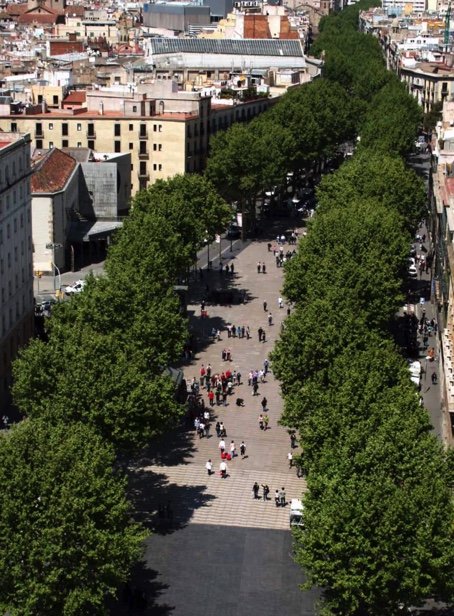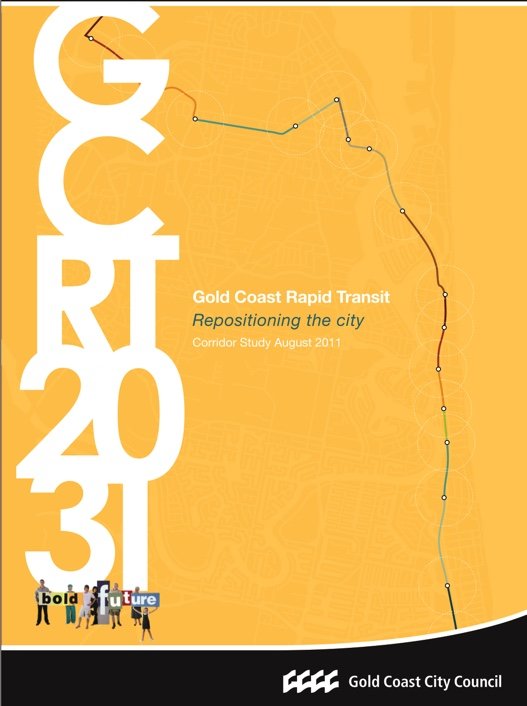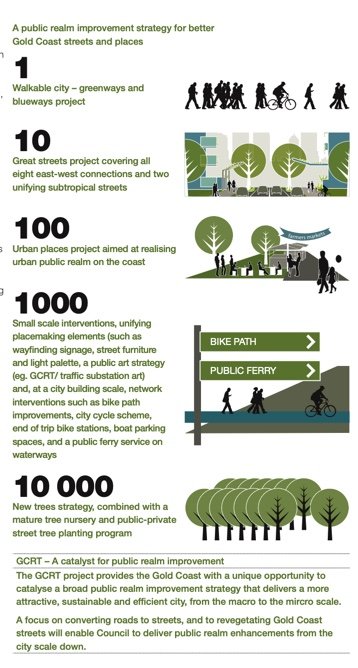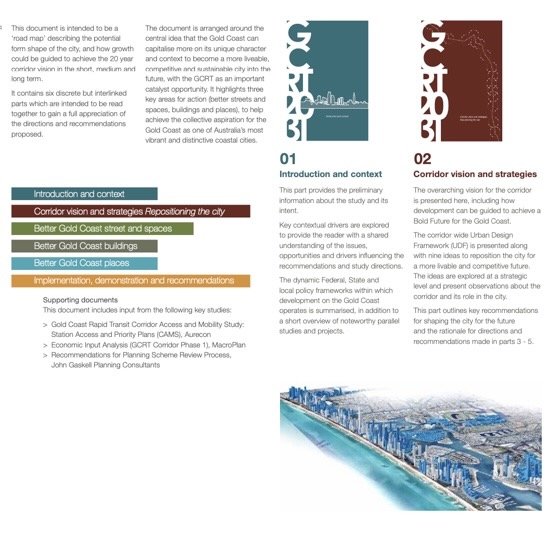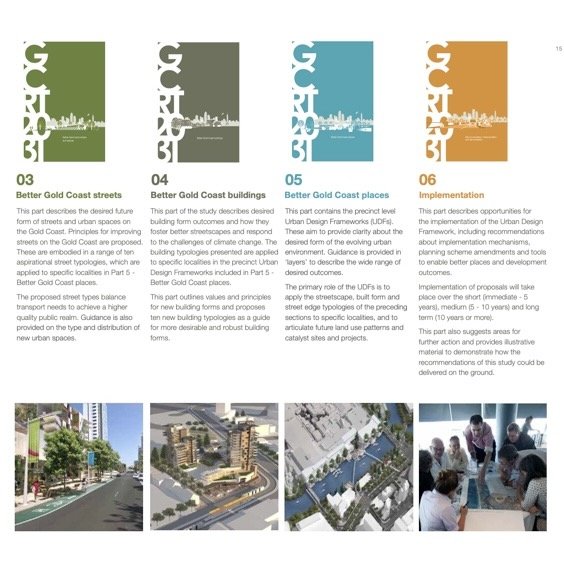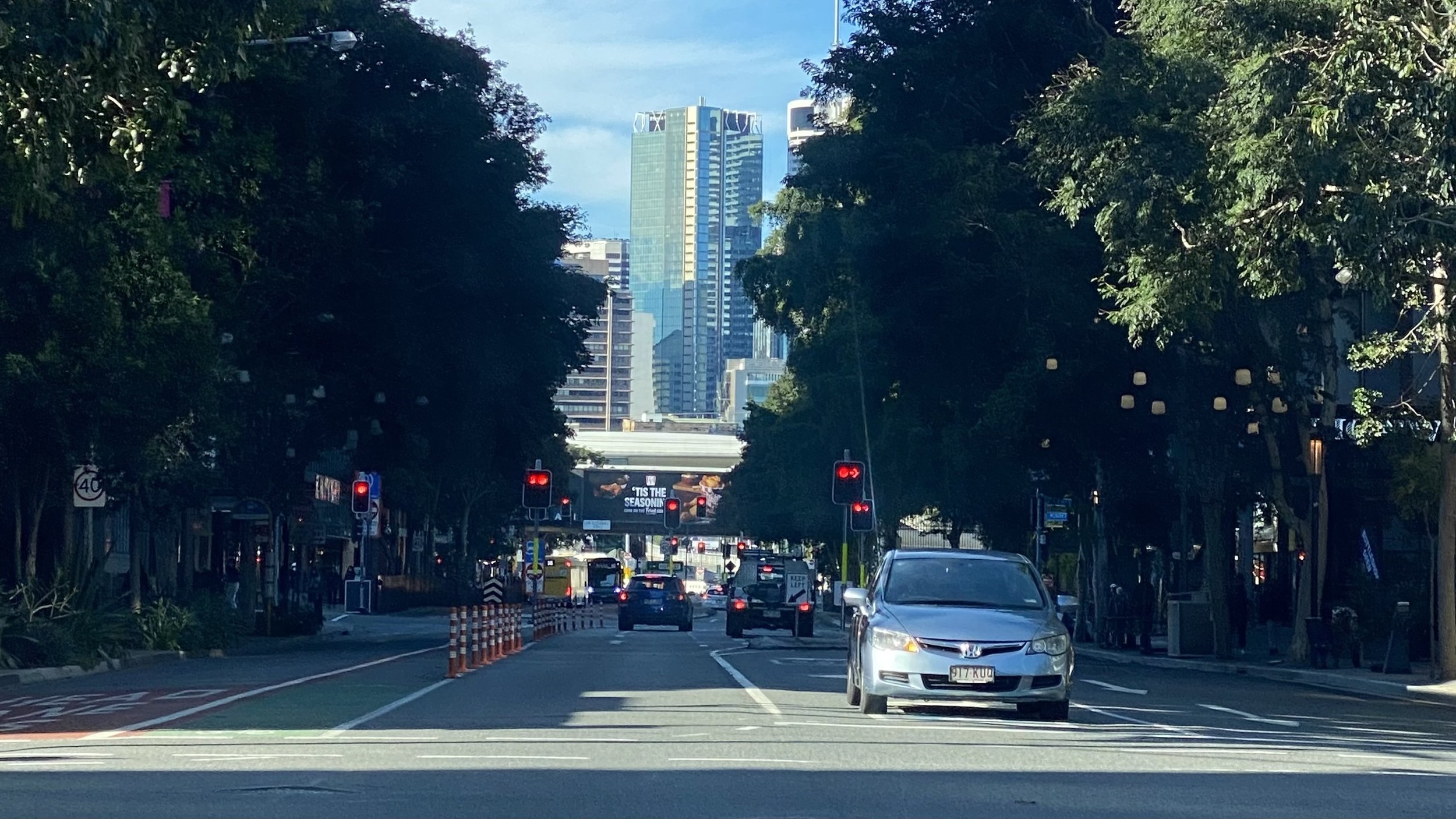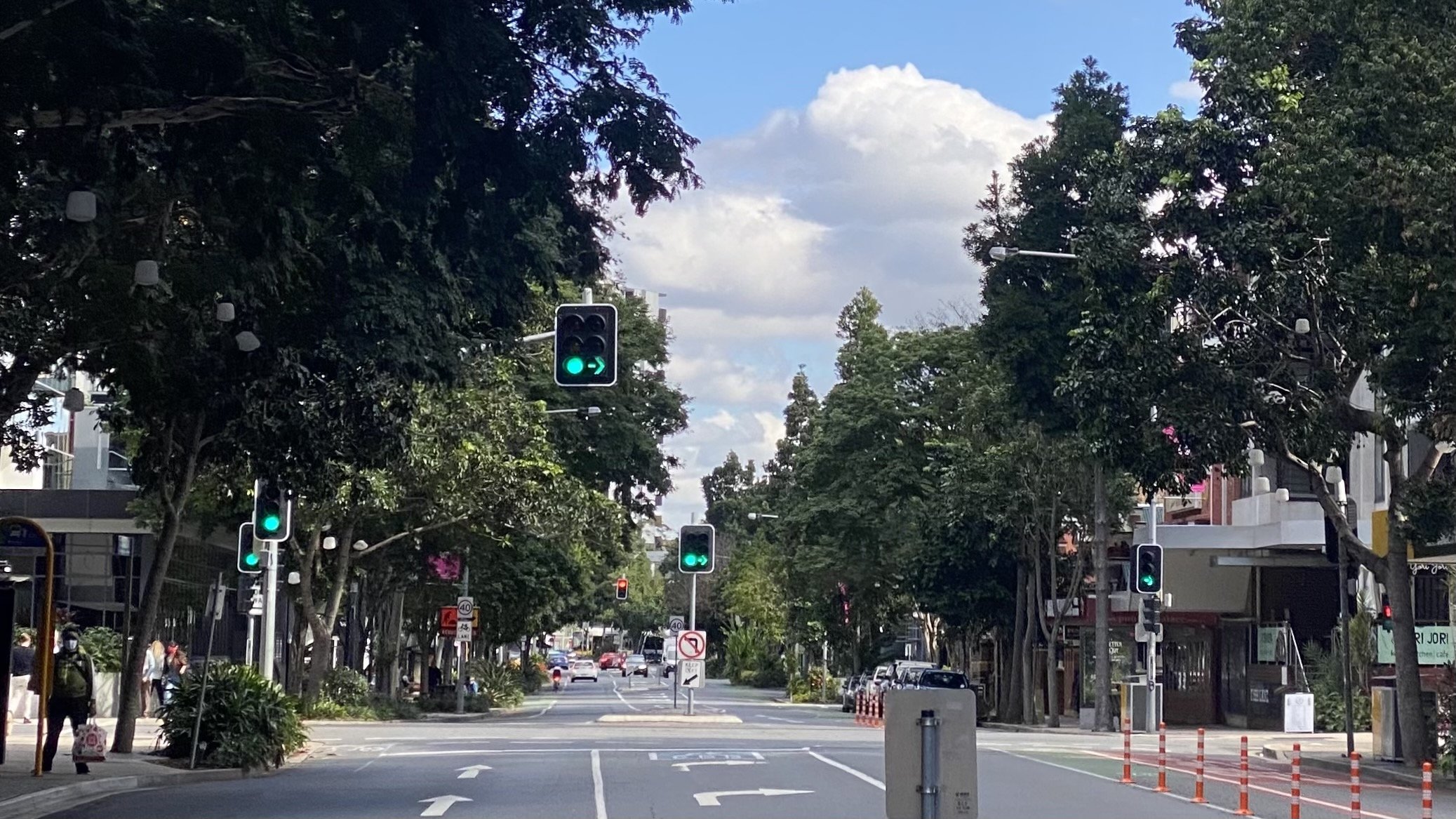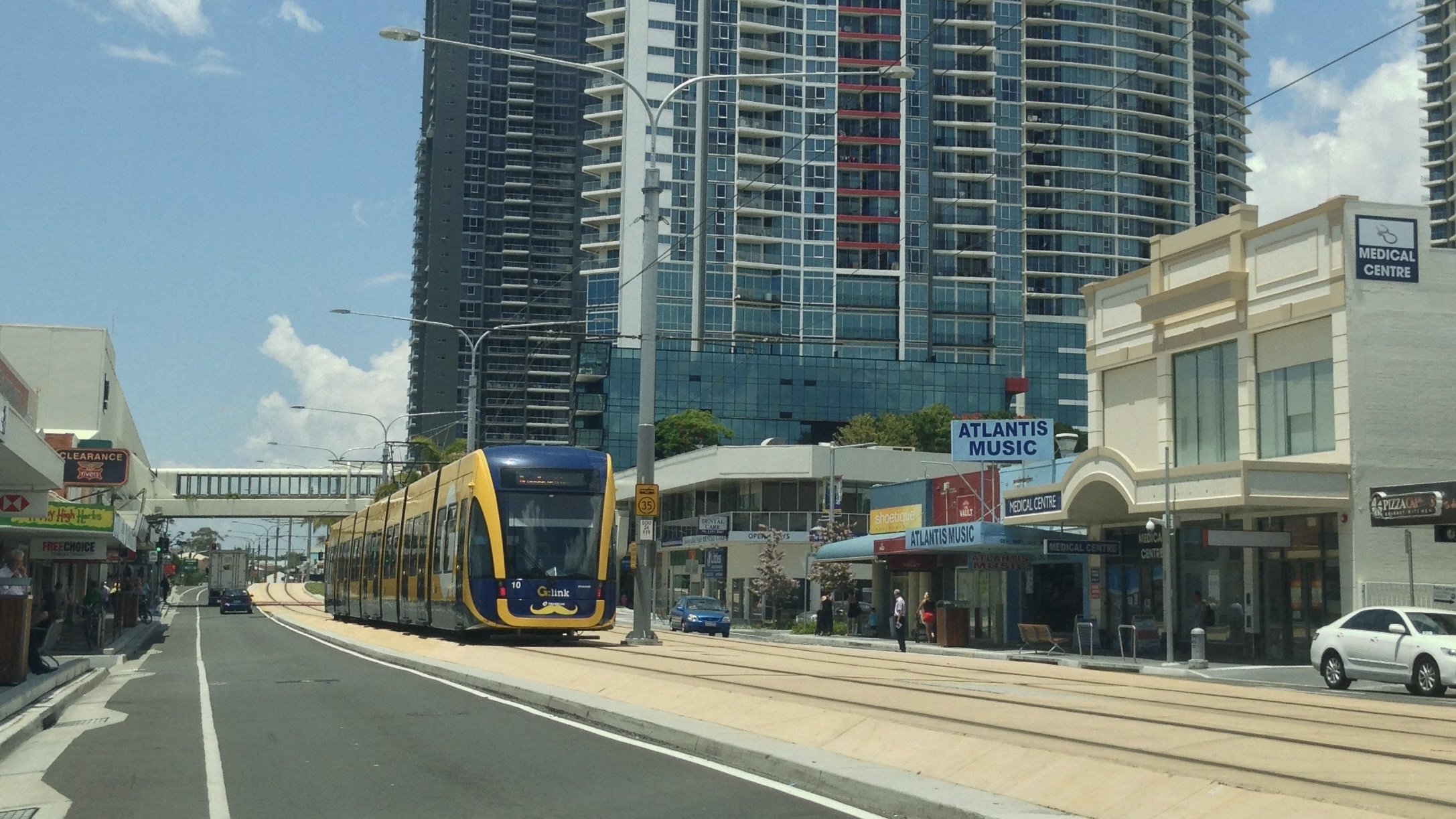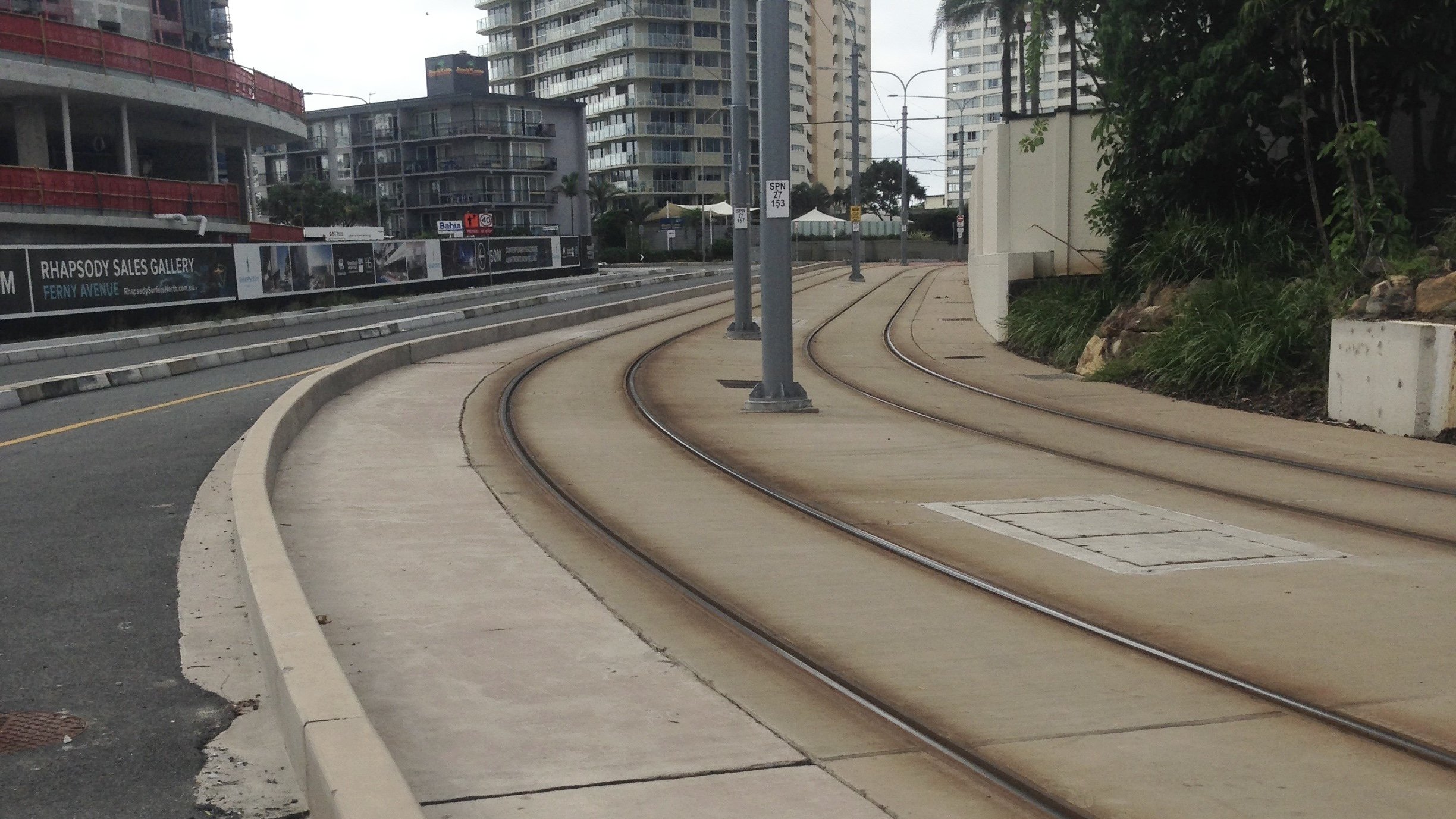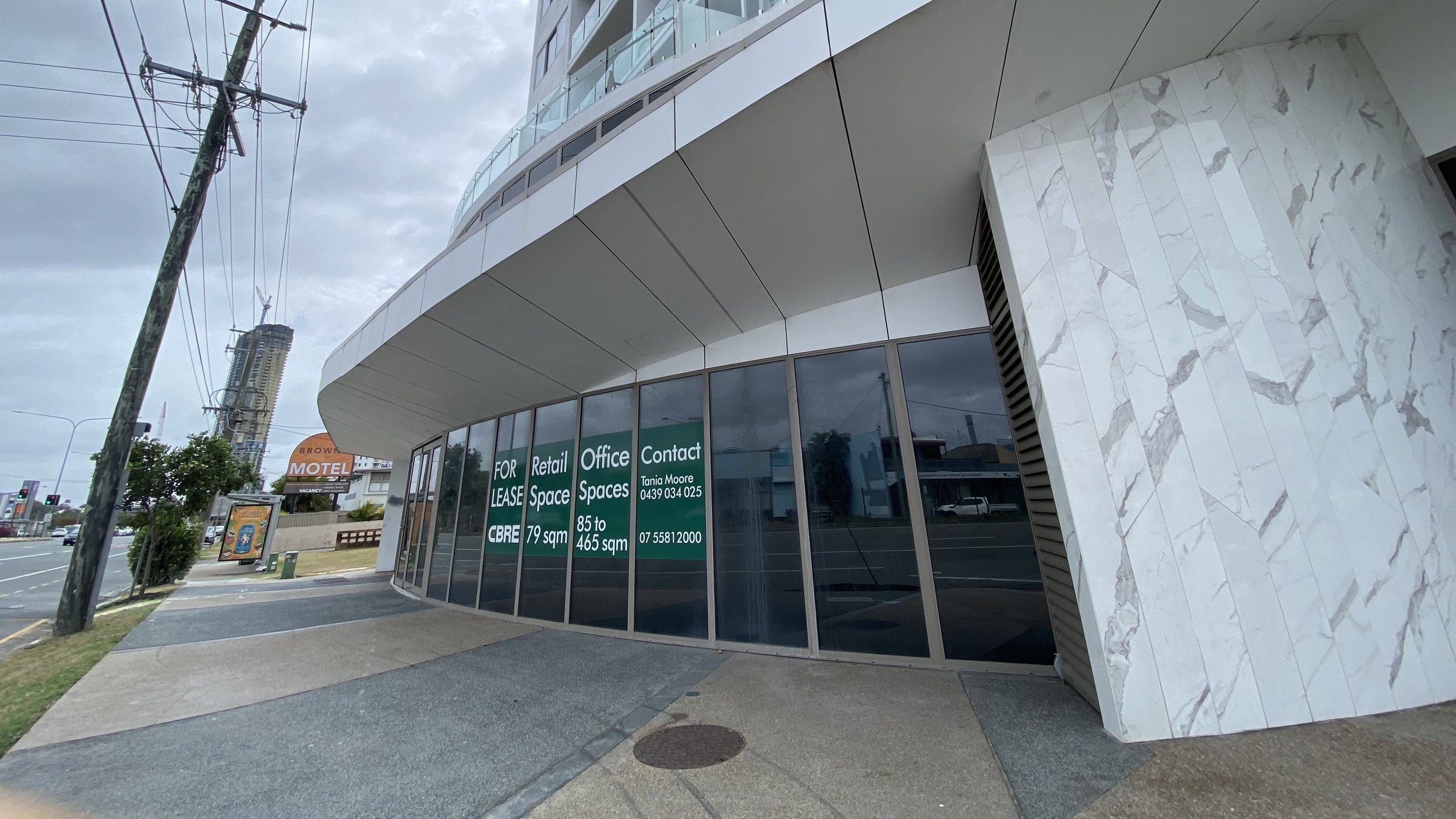Highway n. a main road, thoroughfare, Boulevard n. a broad street, typically lined with trees
I drank the Kool-Aid. I remember feeling elated in 2011 at the prospect of the urban transformation that was foreshadowed in the Gold Coast Rapid Transit Corridor Study. Checkout the beautiful pictures and urban planning and design ideas. There’s not much to disagree with. I didn’t scrutinise the detailed planning and design as it progressed because I trusted that it would be delivered to plan and I didn’t want to give fuel to the dissenters to slow or halt its delivery.
Most people accepted the transformation and expected that dramatic changes would occur alongside the light rail route, from Main Beach to Broadbeach as depicted in the diagram below from the study.
GCRT 2031 Repositioning the city 2011, p41
At that point, no-one knew that in 2012, Tom Tate would pull a Steven Bradbury to slide into the Mayoral role, and appoint Cameron Caldwell to the influential position ad Chair of the City Planning Committee, with an agenda to aggressively supercharge the construction industry. Nor did anyone expect that within four years, they would radically deregulate the town planning scheme and make the entire stretch from Main Beach to Broadbeach an unlimited height area, with no plot ratio control, and switch the hierarchy of assessment criteria so that even development proposals that fail to satisfy performance criteria are exempt from Impact Assessment - which means there is no opportunity for objections from neighbours.
On top of this, to ensure nothing could be inhibited, they designated a Light Rail Urban Renewal Area that essentially lets the council approve anything that developers serve up within walking distance of the corridor.
Of course, the council could reassure residents that along the four-year and largely confidential process of reviewing the planning scheme, they commissioned a variety of studies that guided and justified the final draft that was exhibited to the public for feedback. A sceptic might suggest that to some degree, studies were biased to affirm pre-determined outcomes. For example, in early 2015, the brief for the Building Height Study that was awarded to planning form Urbis and revealed publicly in late 2017 instructed that “The northern coastal high rise strip will continue to grow with the emerging Southport CBD and the consolidation of Surfers Paradise and Broadbeach. The City Plan contains “no prescribed height limit” provisions in these areas which will also facilitate this outcome.”
HX(HX) Building Height overlay from Main Beach to Broadbeach
Little had the trusting public expected that the ‘Iconic Skyline’ principle applied to the area from MacArthur Parade to Peerless Avenue, meant that the council would neglect to care about the character and amenity of local streets and neighbourhoods within that frame. In the maelstrom of the City Plan public review period, there was hardly time to properly examine, query and understand the implications, let alone respond on matters like this. In the years that followed, the council granted hundreds of approvals for highrise development proposals which councils in most cities would regard as excessive, even preposterous. As residents began to realise the grave implications of this broad brushstroke (i.e. the HX(HX) unlimited height overlay that guarantees all development applications for highrise residential towers are Code Assessable), they began to joke that the area from Main Beach to Broadbeach had been HeXed. Yet, it wasn’t a joke. This has become the new reality.
Streetscape alongside the light rail track through Surfers Paradise
In response to criticism about poor design outcomes, the council produced an excellent Urban Ground Guide to demonstrate good design for development at street faces. However, they stopped short of incorporating the guide within the City Plan so it has little more effect than a public relations exercise.
I wrote about the politics of tall buildings and how the City Plan’s design code for highrise accommodation could be amended to mandate better design outcomes in a previous essay titled ‘Trojan horses, red herrings and green wedges’. It wasn’t picked up by the council or news media, and if you looked at social media likes and comments, you’d think that hardly anyone read it. However, my website analytics reveal it has been viewed over 3,000 times, which makes me feel that it’s worthwhile continuing to comment on urban planning and design matters.
It is regrettable that strategies and initiatives in the 2011 Corridor Study, that were intended to make buildings and streets and places better, were superseded and forgotten. Through Southport and Surfers Paradise, the corridor is like a concrete scar and residents of Mermaid Beach, Nobbys, Miami and Burleigh fear that the Stage 3 extension of the light rail will similarly make Gold Coast Highway worse instead of better.
Sometimes I dare to re-imagine the highway as Gold Coast Boulevard - lined with green, subtropical vegetation. We know this is achievable in the South-East Queensland climate. Melbourne Street Boulevard in South Brisbane is a great example where a harsh urban streetscape has been softened by green and shady planting.
Products like Citygreen strata cells and pavement systems can be used to enable establishment of big trees without concern about tree roots damaging underground pipes and cables. And as electric vehicles take over our roads, traffic noise will diminish. There will be little reason why the Gold Coast Highway can’t become a tree-lined boulevard from Coolangatta to Labrador, and even Helensvale.
It’s not only the council that is responsible for the undesirable outcomes along the corridor. We have a State Transport Minister who perhaps wasn’t familiar with the 2011 vision and seems dedicated solely to the aim of driving light rail south to the airport, with little care for the urban quality and amenity of the corridor. And now, it emerges that the State Planning Minister is unwilling to support the very modest expectations of many residents to claw back on excessive affordances of the 2016 City Plan. This news comes as a huge disappointment to Gold Coasters who hoped that the minor concessions in Amendments 2 and 3 could help to salvage the quality of the coastal strip.
The Gold Coast is certainly growing, but it’s questionable whether it is moving in the right direction. Most people accept that to accommodate population growth, the urban form needs to consolidate, and we need public transport infrastructure to reduce our reliance on cars so that the city won’t choke with traffic. However, there is a lot of dissent about extension of light rail to the airport and supercharging of highrise development as the principal ways of achieving this.
Meanwhile, there’s a conspicuous absence of mid-rise, medium-density residential development. To elevate this in public discourse I have previously written about the attributes of well-designed and affordable three to eight storey typologies for infill and renewal areas at the Gold Coast. For several years there has been constant news and narrative about a housing affordability crisis. Recently Premier Palaszczuk has announced a Queensland Housing Summit to address multiple housing issues, but Mayor Tate’s continuing silence on this topic is deafening.
More and more Gold Coasters are getting frustrated by these various planning and development conundrums. They feel like they have been sold a pup and now there’s a lack of positive action to remedy the problems.
They want the Planning Minister to gazette City Plan Amendments 2 and 3.
They want State and council planning departments stop giving lip service to the need for medium-density housing and prioritise a ‘Missing Middle’ agenda, to promote and facilitate well-designed and affordable mid-rise housing.
They want to see commitment to converting the Gold Coast Highway to an attractive, green boulevard that’s more like the 2011 Corridor Study vision than the harsh and hostile passage it is today.
Herein lie the failures of, and the opportunities for the State and local planning authorities to collaborate and coordinate, in the public interest…

